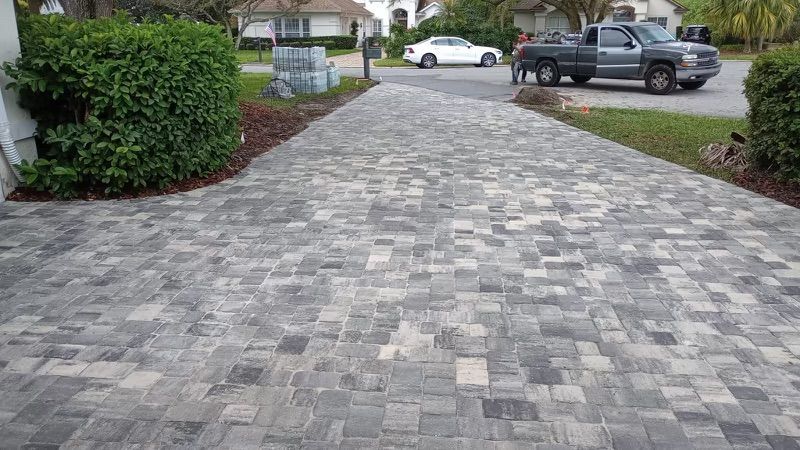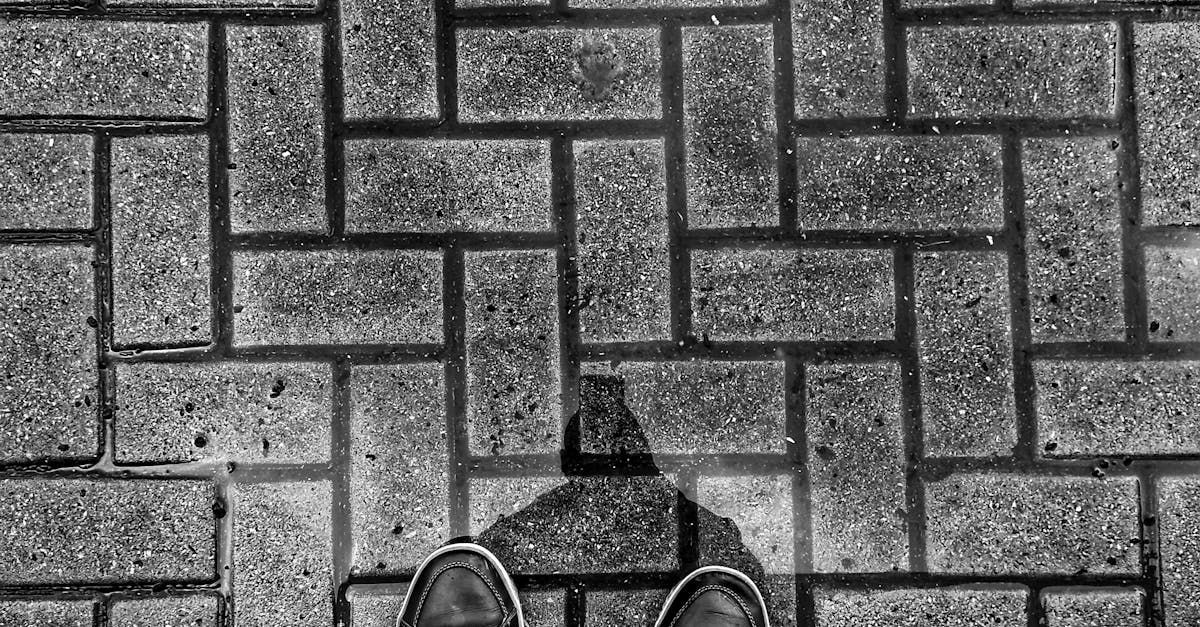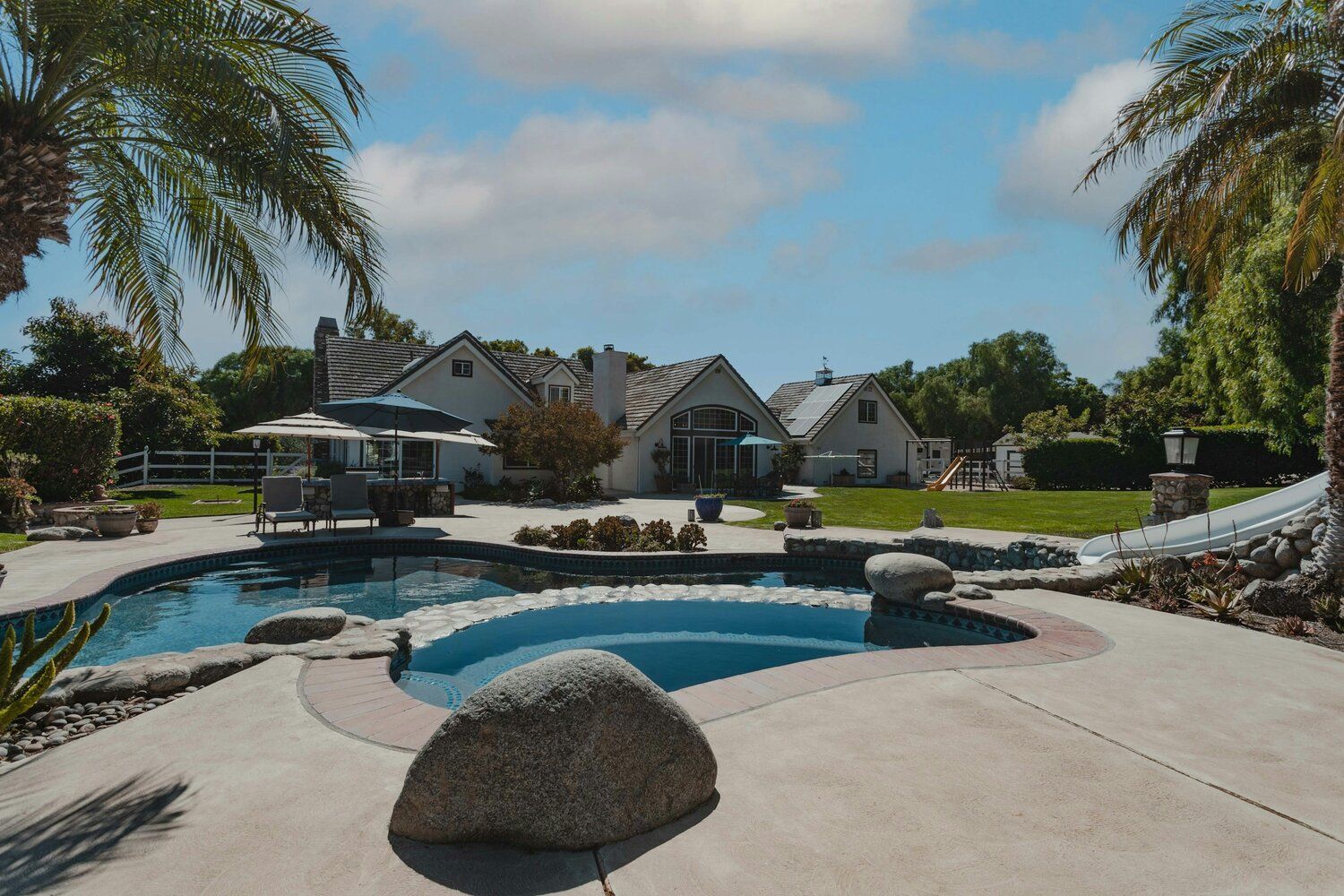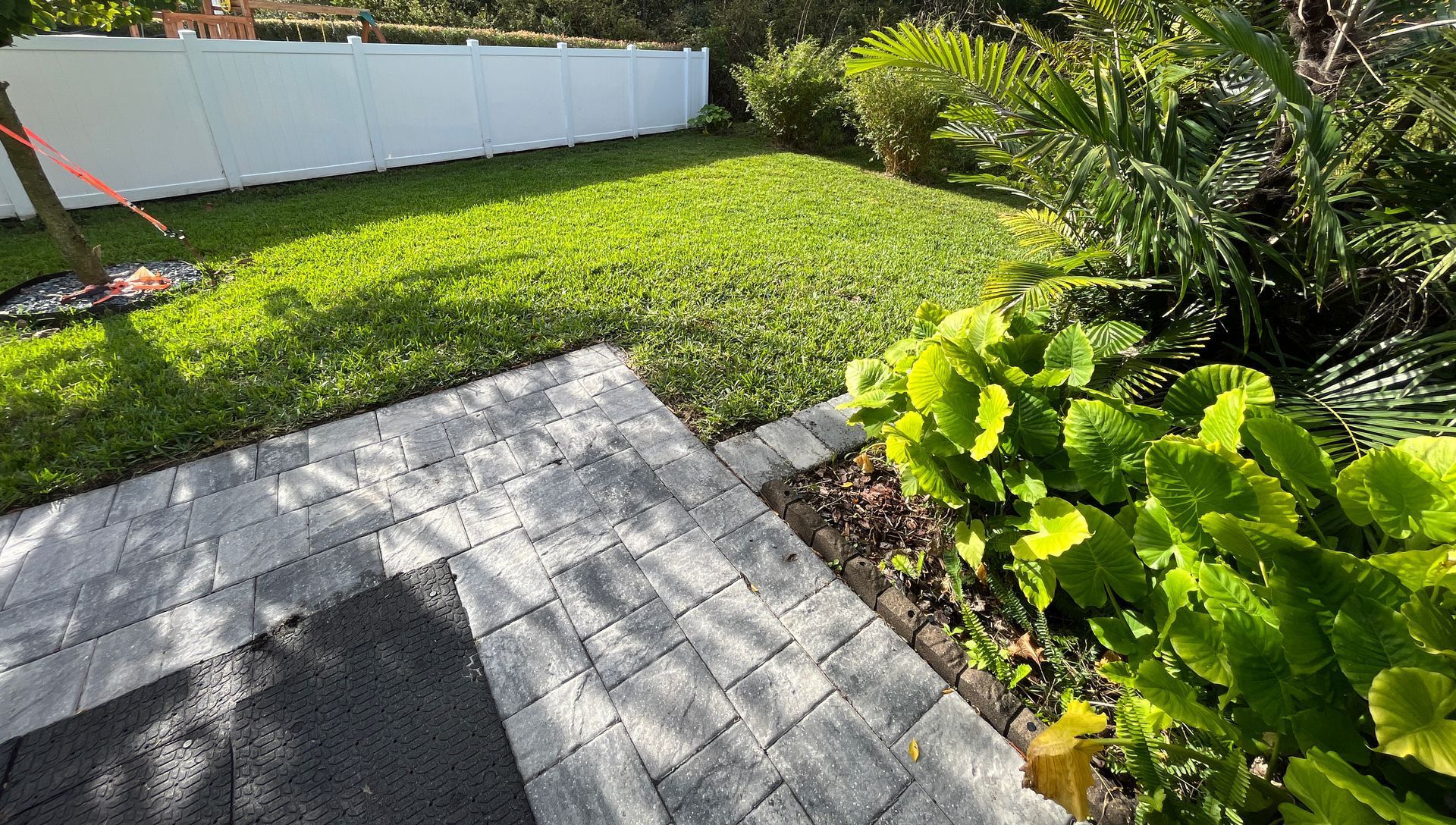Can Pavers Be Installed Over Existing Concrete? Here's What You Need to Know
You can install pavers over existing concrete. This outdoor paving option is appealing because it saves time and money by avoiding the need to remove old concrete.
In fact, research shows that homeowners can save up to 50% of the cost of a full concrete replacement by opting for paver installation over an existing surface. However, there are some important things to consider before you start. While the process can be simple, it’s not always the best solution for every situation.
Whether you're considering limestone, flagstone, or brick pavers, it’s crucial to ensure proper preparation before installation. In this article, we’ll explore the benefits and downsides of installing pavers over concrete and the best way to do it.
Benefits of Pavers
Pavers, made from various materials such as flagstone, brick, granite, and porcelain, offer numerous benefits for your outdoor space, whether it’s a driveway, patio, or walkway. Here’s why pavers are an excellent choice:
- Aesthetic Appeal: Pavers come in a variety of colors, shapes, and sizes, allowing you to create unique designs for your landscape and outdoor paving options. Whether you prefer the beauty of slate, sandstone, or travertine, there's a material that suits your style. These paving materials can be arranged in different patterns such as herringbone or mosaic, enhancing your garden design or landscape design.
- Durability: Pavers made from materials like granite, bluestone, or limestone are highly durable, making them suitable for outdoor paving in areas exposed to heavy foot traffic or vehicle movement. Unlike concrete, which may crack over time, pavers, especially those made from durable materials like granite and porcelain, offer increased longevity and are less prone to damage.
- Low Maintenance: Unlike concrete, pavers are easy to repair. If one paver becomes damaged, you can simply replace it without affecting the surrounding area. They are also more resistant to stains, weather, and pressure. For example, cobblestone pavers are popular for their resistance to snow and rain, making them ideal for climates with harsh winters.
- Flexibility: Pavers can be installed in various patterns, including classic brickwork, creating an attractive, functional outdoor surface. The flexibility of pavers allows for more customization, whether you’re creating a driveway, patio, or even a garden pathway.
Pros and Cons of Putting Pavers Over Concrete
Installing pavers over concrete has several benefits but also some drawbacks. Here's what to consider:
| Pros | Cons |
|---|---|
| Cost-Effective: By avoiding the need for concrete removal, you save money, which can be reinvested into outdoor accessories like garden furniture or lighting. | Uneven Surface: If the existing concrete is cracked or uneven, it can cause the pavers to shift or settle unevenly, which may lead to an unstable surface. |
| Quick Installation: Installing pavers over existing concrete can speed up the process. If you’re working on a driveway, patio, or garden pathway, this makes the installation faster compared to other hardscape options. | Drainage Issues: Concrete doesn’t allow water to flow through. Without proper drainage, water may pool under the pavers, causing long-term damage to your landscape. It’s important to ensure proper slope and drainage to prevent water buildup. |
| Improved Appearance: Pavers can cover stains and cracks in old concrete, giving your outdoor area a fresh look. Whether you choose porcelain tiles, clay, or slate, the pavers can transform your patio, walkway, or driveway. | Increased Weight: Adding pavers can make the surface heavier, which might not be suitable for weak foundations or structures, such as those with a thin base of gravel or soil. |
| Durability: Pavers, especially those made from durable materials like limestone or travertine, are designed to withstand the elements, reducing the need for constant repair. | Movement Risk: If the concrete isn’t properly prepared, the pavers could shift or settle unevenly, which could compromise the integrity of the surface over time. |
Considerations Before Installing Pavers Over Concrete
Before deciding to install pavers over concrete, consider these key factors to ensure the project’s success:
Condition of the Concrete
Ensure the concrete is in good shape. If there are large cracks or uneven spots, the surface may need to be repaired or resurfaced before pavers are laid. You may need to use sand, mortar, or even grout to fill cracks and ensure a smooth surface.
Drainage
Proper drainage is essential for preventing water from pooling underneath your pavers. Without the correct slope or drainage system, water can become trapped, leading to mold, erosion, or damage to the surrounding lawn or garden. If you’re concerned about drainage, consider using materials like decomposed granite, which naturally supports drainage.
Height Restrictions
Adding pavers will increase the height of the surface. This can affect the transitions between your driveway, patio, and even the surrounding wall. Be mindful of any height restrictions in your area or the space's design.
Budget
Installing pavers over concrete can be cost-effective, but it’s important to consider the total investment. Will the cost of installation and materials fit your home improvement budget? Don’t forget to factor in the cost of labor if you hire a contractor.
The Best Way to Install Pavers Over Concrete
To successfully install pavers over concrete, follow these steps:
- Clean the Surface: Begin by thoroughly cleaning the concrete, removing any dust, dirt, or stains. This ensures that your pavers will adhere well to the surface.
- Address Drainage: If needed, install a drainage system or create a slight slope to ensure water flows off the surface. Decomposed granite or sand can help with this.
- Lay a Base Layer: Install a layer of sand, gravel, or crushed stone on top of the concrete. This will help create a stable foundation for the pavers.
- Install the Pavers: Lay the pavers in your desired pattern, ensuring they are level. Use a rubber mallet to gently tap them into place.
- Fill the Gaps:
Fill the gaps between the pavers with sand to keep them secure and prevent shifting.
Why You Should Hire a Professional
While installing pavers over concrete might seem like a manageable DIY project, it’s often best to hire a professional for the job. At Outdoor Transformations, we bring years of experience to the table. Our experts assess the existing concrete surface, ensuring it’s properly prepared for your chosen pavers, whether you're using porcelain, slate, or travertine. With our guidance, we ensure that materials like mortar and grout are applied correctly for a long-lasting installation.
Hiring a professional also guarantees high-quality results. Our team installs pavers with precision, reducing the risk of uneven settling or shifting over time. Moreover, we can help you with design choices, materials, and drainage to make sure your outdoor space, whether it’s a garden pathway, driveway, or patio, looks beautiful and functions well for years. For reliable paver installation in the Greenville, SC area, trust Outdoor Transformations.
Conclusion
Installing pavers over existing concrete can be a great way to refresh your outdoor space without the hassle of removing old concrete. However, it's important to assess the condition of your concrete, drainage needs, and other factors before proceeding.
Whether you're upgrading your driveway, creating a patio, or designing a new walkway, the right pavers can transform your outdoor space. If you’re unsure or want a flawless installation, hiring a professional can save you time, money, and potential headaches. With the right preparation and materials, like limestone, clay, or even mosaic tile, you’ll enjoy a durable, attractive outdoor area for years to come.













